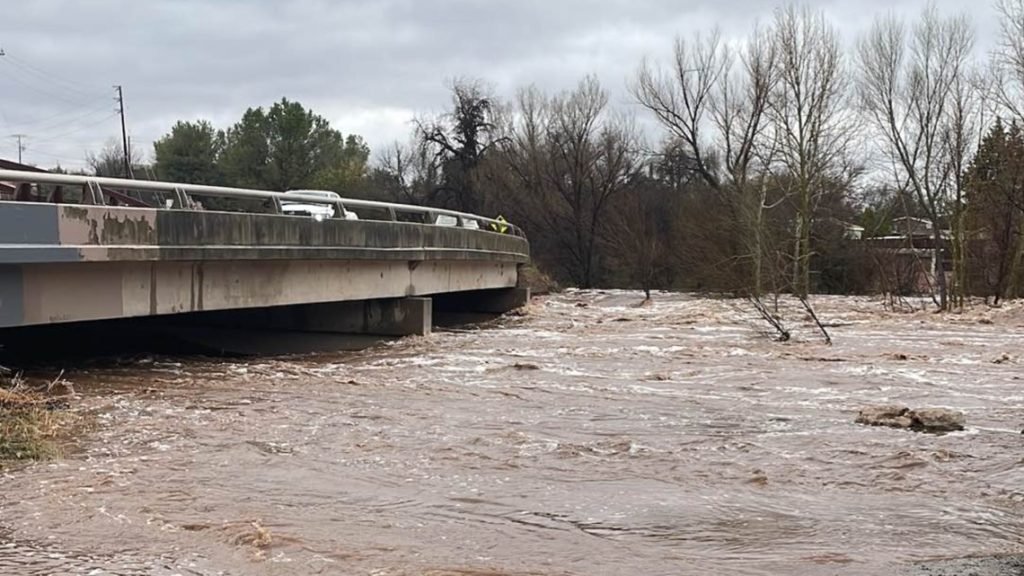LAKE MONTEZUMA, Arizona — Some residents of north-central Arizona were told to prepare to evacuate Tuesday afternoon due to rising water levels in rivers and basins.
The Yavapai County Sheriff has ordered residents of the Rimrock and Lake Montezuma areas along Wet Beaver Creek to evacuate or move to higher ground.
The National Weather Service issued a flood advisory Tuesday afternoon for residents of the Oak Creek area south of Sedona.
A winter weather advisory has been issued for parts of Central, Northwest, and Northeast Arizona, with up to 3 inches of snow forecast for the Flagstaff area.
Arizona Department of Transportation officials said State Route 89A was closed in both directions between Sedona and Flagstaff due to rock slides and inclement weather, while State Route 260 was closed due to multiple disabled vehicles. was closed near Forest Lakes in . State Route 87 in Payson and State Route 64 near Grand Canyon National Park are also closed.
An evacuation center has been set up at 395 South Main Street in Camp Verde. Call 928-442-5103 if you have questions about evacuation.
The Salt River Project said the storm forced it to increase water discharge from two reservoirs on the Verde River. Officials said in a news release that the reservoir was already more than 80% full.
SRP says it will begin releasing 16,000 cubic feet of water per second on Tuesday. This equates to 120,000 gallons (455,000 liters) of water per second. Cubic feet per second could rise further later in the week.
A recent study found that the 13,000-square-mile (34,000-square-kilometer) watershed draining into these Verde Reservoirs has the deepest snow cover in 30 years. Serving primarily central Arizona, the SRP operates by strategically releasing water from dams on the Salt and Verde rivers into a network of canals.
speed up
Check out the latest news and stories on our 12News YouTube playlist here.
Flood Safety:
The Arizona Fire and Medical Department provides the following tips on hazards to be aware of during and after a flood, including fire, electrical, and chemical safety.
Generators and alternative heating devices can pose a fire hazard during floods if not used correctly or maintained properly. Puddles and appliances can become charged and cause electrical fires.
For electricity, residents of flooded areas should turn off their homes if they can reach the main breaker or fuse box. All wires in your home can be electrically charged and dangerous. Residents should have their homes checked for damage by a professional technician before powering on.
Make sure that flammable liquids, such as thinner, lighter fluid, and gasoline, are not spilled in or near your home. Keep flammable liquids away from electrical or alternative heat sources to avoid ignition.
All smoke alarms in your home should be tested monthly and the batteries replaced annually. Some smoke alarms are dependent on your home’s electrical service and may go off when the power is turned off.
Make sure fire hydrants near your home are cleared of debris so fire departments can easily assess them in the event of a fire.
















